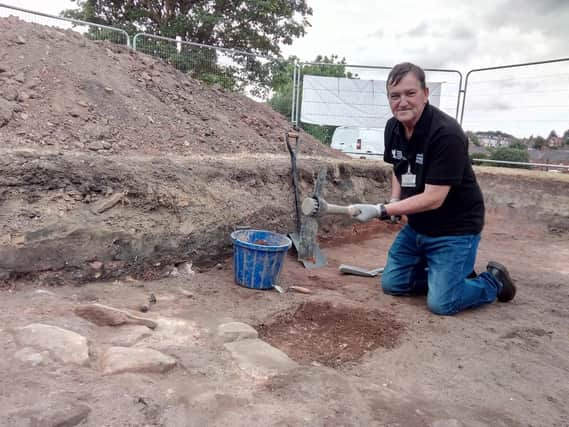Community dig will unearth village's industrial history


But it is hoped that many more pieces to the jigsaw which makes up the area’s remarkable Industrial Revolution history lay just a few feet beneath the surface and a two week community archaeology project has now been launched in at attempt to bring more of the area’s past back to life.
Barnsley Council has long-standing ambitions to establish the area as a visitor attraction and its Newcomen beam engine, a World Heritage Site, is well known.
Advertisement
Hide AdAdvertisement
Hide AdLesser-known is the iron-making past of the area, which began in the 1790s and saw remarkable works leave the forges and foundries which covered a huge area, including Southwark Bridge close to St Paul’s Cathedral in London and a pair bridges constructed for the Brunel family which became a temporary tourist attraction when they were put together on site before being dismantled and taken away by canal to start a journey which would see them put to use thousands of miles away.
When the iron industry eventually failed, eclipsed by the economies of scale in Sheffield, the site which had been a cauldron of industry was eventually grassed over and became today’s Forge playing fields, with only the pond which provided water for the industry remaining as a reminder of the past.
The council’s ambitions for the site have resulted in a series of interlinked partnerships, which involve the council’s own projects around the Elsecar Heritage Centre, which began life as workshops to service the collieries of the Fitzwilliam family’s estate.
The area is already designated a Heritage Action Zone but there is a further joint enterprise with Rotherham Council and the Wentworth Woodhouse Preservation Trust, which is now working to restore the Fitzwilliam family’s stately home in that village.
Advertisement
Hide AdAdvertisement
Hide AdThat organisation is Great Place Wentworth and Elsecar and has been keen to get both school pupils and older members of the community involved in the project.
Heritage specialist Megan Clement said: “The locals around here are amazing. We have only been here for two days but keep getting the same people coming back to check on progress.”
Several school parties have been invited in to help and they will be followed by adult volunteers, with the aim of helping to give people a direct connection with the past of the area where they live.
Dr John Tanner, Barnsley Council’s resident heritage specialist at Elsecar, said the Great Place partnership was important: “It means we are not constrained by borders. There is a lot of planning between Wentworth and Elsecar and both sites have an incredible future.
“They are very strongly linked,” he said.
Advertisement
Hide AdAdvertisement
Hide Ad“There are big and exciting ambitions for both Elsecar and Wentworth, in terms of what they can contribute for people and our economies. There are some really exciting things coming up and this Great Place project is just one example,” he said.
It is funded with money from the Heritage Lottery and Arts Council and is scheduled to run for three years.
Early excavation work has uncovered many artefacts, some which are likely to have been dumped on the land after the ironworks ceased to exist, but the remains of a stone wall, which may have formed part of a forge, have already been discovered and are being investigated further.